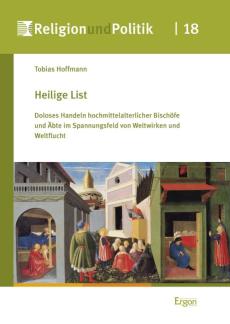Holy Trickery
Historian Tobias Hoffmann presents dissertation on trickery in the Middle Ages

In his dissertation, the historian Tobias Hoffmann of the Cluster of Excellence “Religion and Politics” has examined the significance of trickery in the Middle Ages using the example of bishops’ and abbots’ vitae. The study has been published by Ergon-Verlag under the title “Heilige List. Doloses Handeln hochmittelalterlicher Bischöfe und Äbte im Spannungsfeld von Weltwirken und Weltflucht” (Holy Trick. Malicious Acting of High Medieval Bishops and Abbots between the Conflicting Priorities of Working in and Flight from the World) in the series “Religion und Politik”. In the Middle Ages, trickery had an ambivalent value. While Christian authors condemned trickery in principle, they often regarded it as praiseworthy or even holy if it served a good purpose. On the basis of high medieval bishops’ and abbots’ vitae, this study examines trickeries in religious as well as political contexts described as legitimate and refined means of conflict resolution.
The vitae report, for example, how bishops and abbots pretended to eat, drank water instead of wine, and wore penitential garments made of hair under golden dresses to hide their asceticism. They explain why the holy men secretly gave alms, how they overcame shame with trickery, when they used ambiguous language, and why they committed thefts without hesitation. The extent to which such narratives of trickeries served to shape problematic memories and eliminate certain flaws is also the subject of this study. (Ergon/sca)

